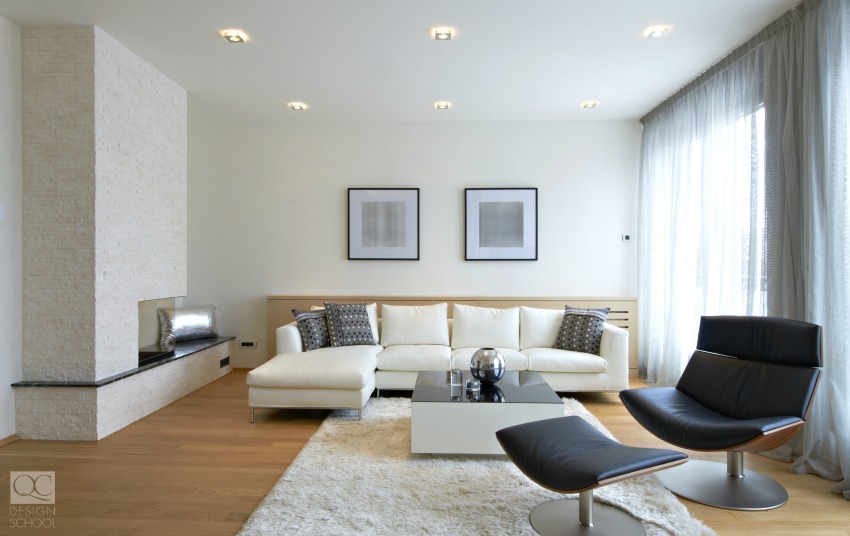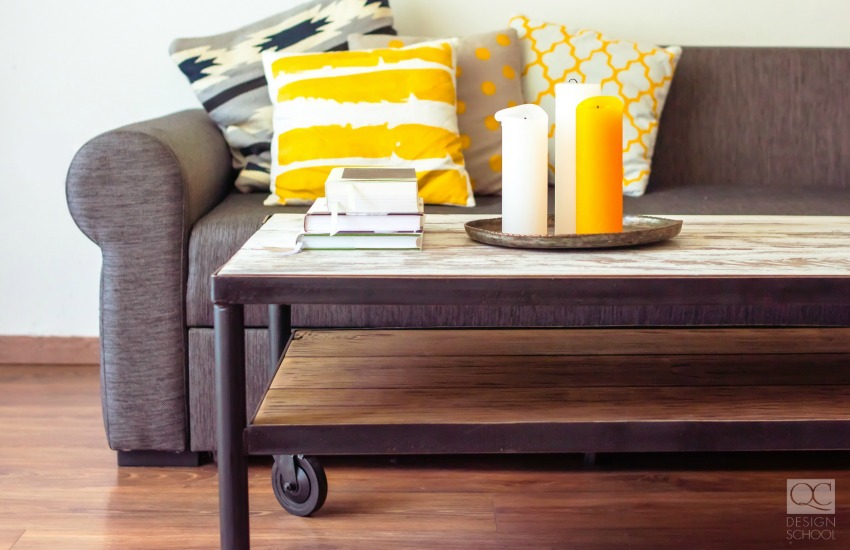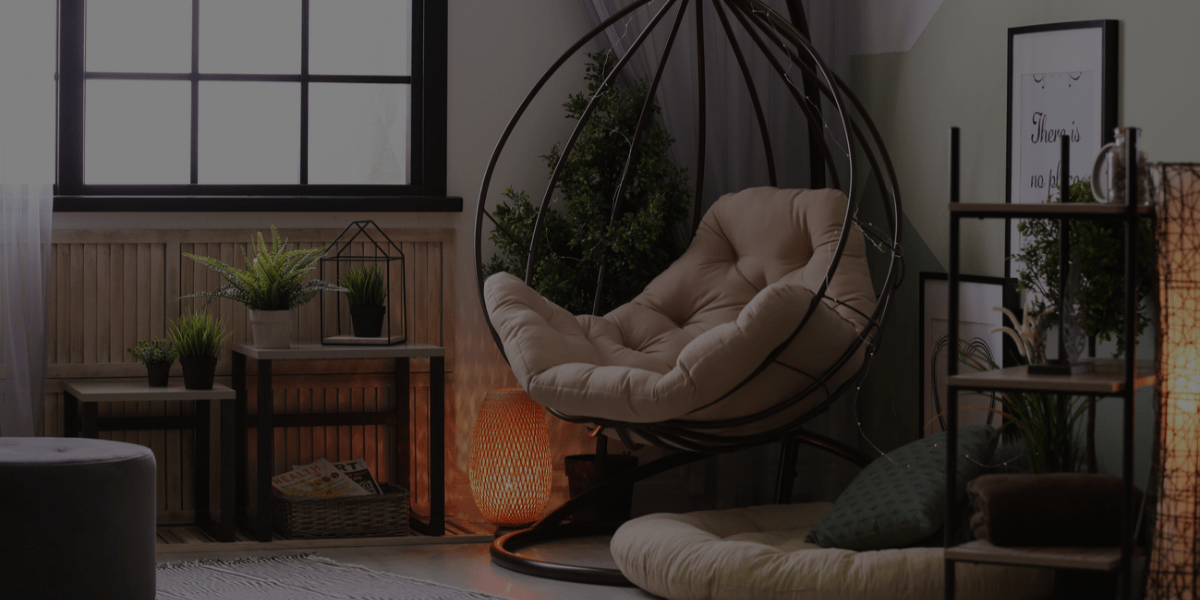Although all QC Design School students take the same Interior Decorating Course with identical lessons and assignments, every graduate walks out with their own unique decorating style. That’s the beauty of individual creativity! But while every person brings their own flair to their decorating projects, there are certain rules that every certified interior decorator keeps close to the heart.
Want to know more? Keep reading for the 8 home décor rules interior decorators should live by!
1. Always take measurements
Always, always, ALWAYS whip your measuring tape out when you’re doing an evaluation of the room(s) you’re going to be working in. Not only should the physical space be measured, but make sure you’re also getting the measurements of large furniture pieces when you’re putting together your floor plans. Nothing’s worse than trying to cram a dresser and a desk into the corner of the bedroom, only to find out that you’re blocking the door!
While we’re on the subject of the door… make sure that the furniture you curate for your clients can actually fit through the entry way and down whatever hallways to get to their final destination. Take measurements of the height, length, width, and diagonal width to ensure that you’ve got everything covered! Check out this handy article for more information on measuring your furniture!
2. Arrange your light sources
When your only lighting comes from above, it can get pretty boring fast. You want to make sure that when you enter a new room, it feels like you have. Using lighting to accentuate the different rooms in a house is key—especially if the house is lacking in windows and natural lighting. Using a mixture of different lighting options at different scales and heights will ensure that all the dark corners of a room are illuminated and give you that added interest.
When it comes to lighting in a dining room, the traditional chandelier is still a strong choice. When proportionally sized with the dining room table, it can tie the whole room together. Just make sure the dramatic lighting piece is high enough so that your clients and their guests aren’t constantly bumping their heads on the fixtures when they stand up.

3. Create flow
Furniture placement can directly impact how people perceive the space and how well they move. Make sure that all the rooms you design facilitate movement!
Your clients should never feel cramped—especially since the home is supposed to be a place to relax and unwind after a long day at work. Space out the furniture so that your clients won’t be tripping over themselves and their furniture when trying to move from point A to point B.
The flow of the rooms should also make sense. Would it make sense for your clients to walk through the living room to get to the dining room from the kitchen? With the prevalence of open-concept spaces, it’s often up to interior decorators to really define the spaces in logical and aesthetically pleasing ways!
4. Form or function?
An easy rookie mistake is to get carried away with the aesthetics of a room. Form is not function to a paying client! Especially those who may have a few cramped spaces that they’re trying to open up — you don’t have space to waste! It can be a daunting task to find furniture pieces or décor that are multi-functional AND fitting for the color scheme and theme of the rooms. Daunting, but not impossible!
Why not try incorporating suede or leather-upholstered ottomans for a storage solution with a luxurious twist? Or have planters arranged vertically or suspended from the ceiling of a sunroom? Creating different levels of elevation within a single room can allow you to maximize space while also making the space visually interesting!

5. Mix and match properties
Many decorators tend to think that big furniture in a small room can close up an already tiny space. What they don’t know is that added drama with large-furniture functionality can actually be pretty inviting! Need an example? Furnishing a small room with two large armchairs can establish the function of the room and limit the amount of clutter in it, thereby creating a cozy reading nook for clients looking for an easy escape.
Mono-chromatic color schemes are super trendy, but it’s quite the balancing act to adhere to a simple color palette without keeping the place from looking drab and flat.
Decorators should be mixing patterns, shapes, and textures to create focal points in the space that draw in the eyes. Why not mix metal and wood surfaces, rounded cylinders with sharp-cornered tables, or solid colors and chevron print? Interest necessitates mixing and matching!
6. DIY furniture or decor
Budget constraints will often force you to be more creative with how you approach a project. Don’t be afraid to shop around to find deals if your usual furniture and décor connections don’t have exactly what your clients are looking for.
Sometimes you may even find yourself getting your hands dirty and attempt a DIY. While your clients probably don’t want you to build them a bookshelf from scratch, they will appreciate a thrifted mid-century coffee table that’s updated with a fresh coat of paint. Clients will always appreciate one-of-a-kind pieces that won’t break the bank!

7. Invest for the long-haul
That being said, while some décor pieces should be changed from time to time (such as that seasonal throw on the loveseat), others should be mainstays that anchor the room indefinitely.
Make sure that your clients are 100% on-board with the major furniture pieces for the space. If they are not absolutely sure that the design, size, textile, or any other dimension is something that they love, they may regret dropping big bucks on them in the future. They may even come to resent the space! Never make your client feel unwelcome or unhappy in their own home. Pieces such as the dining room table and the sofa are just some of the items that are pricey upfront, but will stand the test of time and ultimately pay for themselves!
8. Take decorating risks
The ninth and final item on our list is arguably the most important! TAKE RISKS! The field of interior decorating requires professionals to continuously innovate and stay at the top of their game. Adapting to a dynamic environment of changing trends and seasons means you must be willing to go outside your comfort zone!
That being said, make sure you take calculated decorating risks! It’s never a good idea to make an outrageous decision just because you can! Your clients should always be at the forefront of your mind. Consult with them along the way and take risks together!


